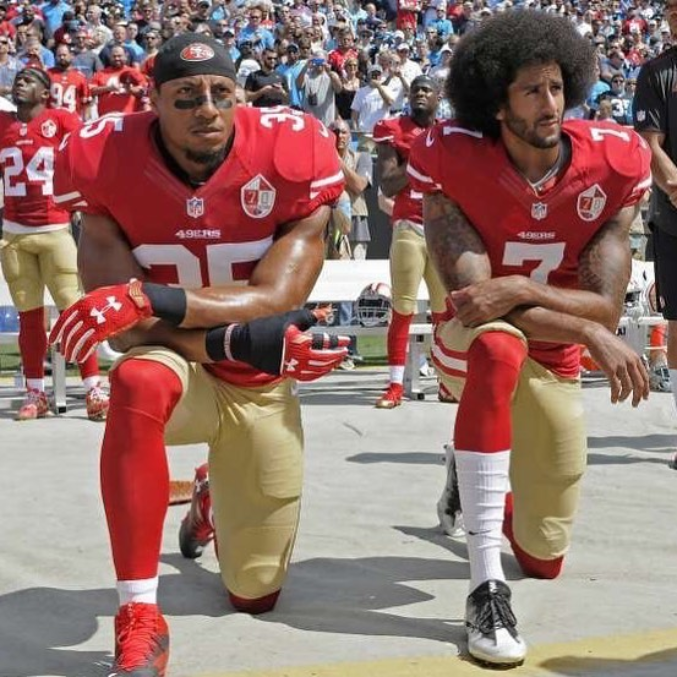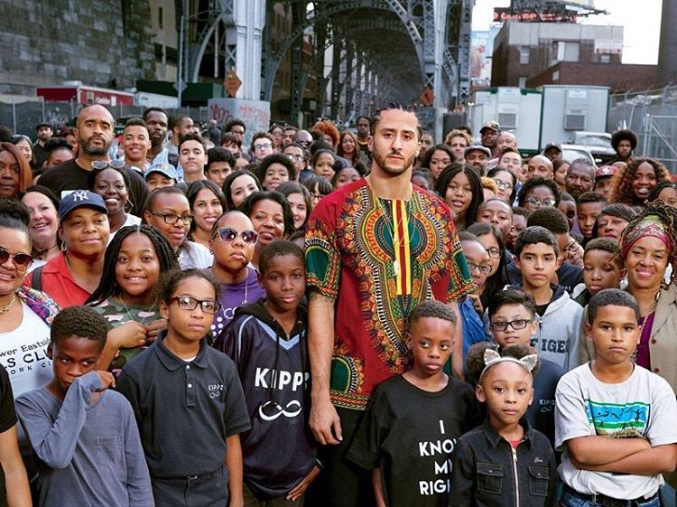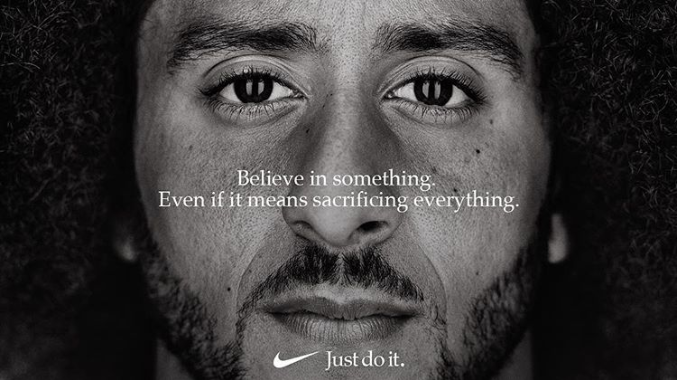The launch of Nike’s new campaign featuring Colin Kaepernick has caused a stir among fans, critics and shareholders.
Written by Sammy Abdo
The legendary “Just Do It” campaign entered its 30th year, and while athletes such as Lebron James and Serena Williams are included in the ad, Nike named Colin Kaepernick the face of their campaign. This move has drawn major attention from critics and fans alike with regards to Kaepernick’s activism.
Kaepernick first entered the national spotlight during Super Bowl XLVII in 2013 as the 49ers quarterback. Profiles and discussion on the biracial, dual threat mystery quarterback ran rampant throughout Super Bowl week. Even after the game, Kaepernick’s buzz did not die as many sports analysts were wondering whether he was the future of the position, with ESPN analyst Ron Jaworski saying Kaepernick could be “one of the greatest quarterbacks ever,”. However, after the 2013 season, Kaepernick was not able to live up to expectations and there were talks of Kaep being cut before the 2016 season.
The Protests Begin
During the 2016 preseason, Kaepernick began sitting for the anthem, though it largely went unnoticed. The media firestorm began as the regular season approached and Kaepernick explained his reasoning, saying “I’m going to continue to stand with the people that are being oppressed. To me, this is something that has to change. When there’s significant change and I feel that flag represents what it’s supposed to represent, and this country is representing people the way that it’s supposed to, I’ll stand.” . He then changed from sitting down to kneeling, as he sought a more respectful way to protest without insulting the military. He got advice from former Green Beret Nate Boyer, a veteran, who’s idea it was to shift to kneeling. Soon his teammate, safety Eric Reid and others around the NFL began kneeling, causing national debate across many walks of life. People who never watched a single second of football were now discussing Kaepernick.


At the end of that season, Kaepernick declined his player option and entered free agency. Through the next couple of months, rumors of collusion to keep him off an NFL roster began to spread as teams began signing players who were less talented and even retired. Midway through the 2017 season Kaepernick filed a collusion grievance case against the NFL, and recently a judge dismissed the NFL’s request to dismiss the case, giving credence to the accusation.
Believing in Kaepernick
Nike’s move to name Kaepernick the face of the marketing campaign should not be surprising; this is the same company who had Charles Barkley say “I’m not a role model” and more recently supported Serena Williams against her catsuit ban. When news spread of the move on Tuesday, Nike’s stocks dropped 3%. This isn’t something that should worry shareholders. In only two days, Nike has created $163-million in exposure across TV, radio, online and social media. Though the majority of the buzz has been positive, many online have begun protesting the choice, as the hashtag “#NikeBoycott” began trending and outraged customers cutting, throwing away or burning their Nike gear. In the short term, it might create some problems for Nike. This in combination with recent sexual harassment allegations and President Trump releasing his ire on Nike could lead to negative effects. However, choice of using a polarizing figure like Kaepernick is a clear indication that Nike intends to target the younger, socially conscious audience. Other brands have tried to target this audience but failed, such as Pepsi with their failed Black Lives Matter ad featuring Kendall Jenner and Starbucks with their “Race Together” cups that tried to promote racial equality. By choosing to believe in Kaepernick, Nike has chosen the long-term game; to be on the right side of history and capture a much more socially aware demographic for a long time.










